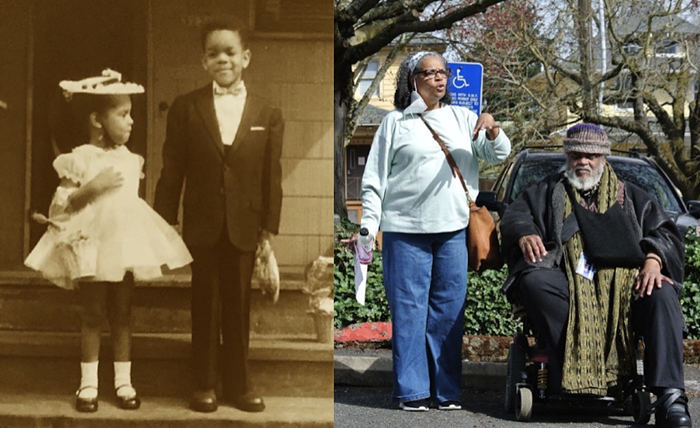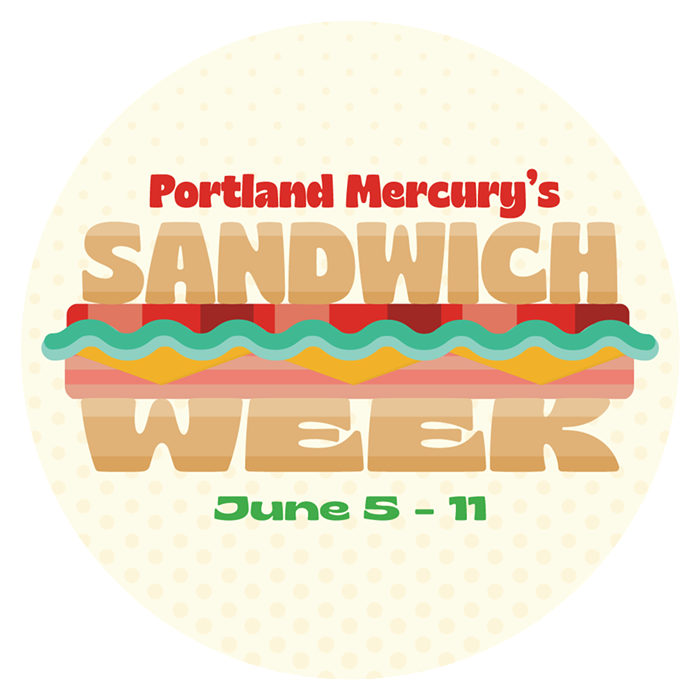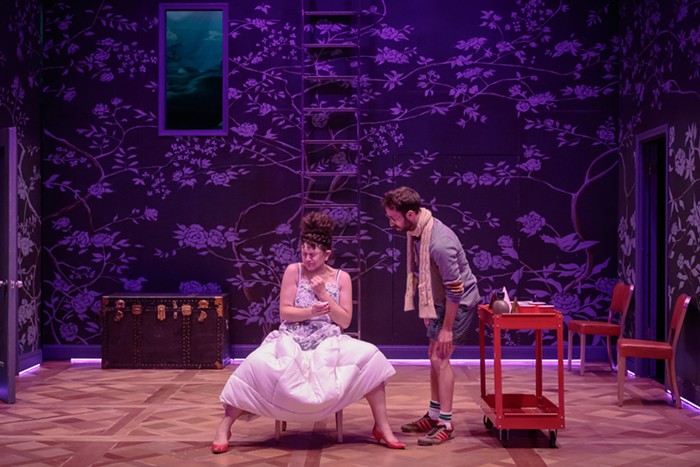THE FIRST PLACE I saw a stranger's scrotum was on the #72 bus, heading south down 82nd Avenue. It was the middle of the summer. I was 13. He was a large man in tiny shorts. There it was, slipping out of the leg hole and resting like old pudding on the plastic seat.
As I learned at a young age, TriMet buses serve a cross-section of the populace. Though Portland is applauded for its groundbreaking light rail system and heralded as the number one bike city in America, more Portlanders ride buses on an average weekday than those two modes of transit combined. Buses reach communities that light rail doesn't, logging 200,700 trips on an average weekday in September. For better or worse, buses erode personal space. Office-bound commuters share seats with rapidly texting teenagers, who rub shoulders with Latino families heading home from the grocery store.
But critics fault TriMet for neglecting buses as it expands rail lines. In the same week the MAX's Green Line opened to Clackamas, budget cuts went into effect axing four bus lines. At the end of November, all of Portland's frequent service lines will become less frequent. Rather than arriving every 15 minutes guaranteed, TriMet will pace frequent service buses every 17 to 20 minutes and save $3.5 million.
"Even if they cut equally across the board, buses feel like they get much harder hit because they haven't seen any increases," says transit activist Chris Smith, who noted that MAX took some cuts, too, as TriMet scrambled to plug a $31 million budget hole this year.
"The question is where do you want to put your expenses," says TriMet spokeswoman Mary Fetsch. Light rail costs a lot more upfront to build, but it's cheaper to operate. Fetsch says TriMet is not prioritizing light rail over buses, describing rail as the "backbone" of Portland's transit system and buses as its "workhorses."
In an act of equal parts celebration, investigation, and self-flagellation, reporter Sean Breslin and I chose four of the city's most heavily ridden frequent-service buses, the buses that will soon be scaled back, and rode each line all the damn way from start to finish.
But not before asking Portland's bus drivers for their insights on which lines are the most interesting or dangerous. "#67 has the most diversity, like driving a United Nations bus!" said one, via the transit operators Yahoo group.
"The #72 is notorious for assholes and the #71 on the 122nd side," wrote another. "I get called a faggot ass motherfucker twice a week on those lines." It was going to be a long ride. SARAH MIRK
Bus Line: #4
Weekday Daily Riders: 17,610
Route: St. Johns to Gresham via Portland City Center
The #4 is a commuter bus. In the mornings, it's jammed with students heading to schools farther south and farther west than their home neighborhoods; in the evenings, downtown office workers rely on it for rides back out to where the rent is cheap.
On the Friday night before Halloween, the bus is as close to a fifth grade social studies class "melting pot" vision of America as I've ever seen. A very young white mom sits in the front seats, juggling a baby and stroller. An old black man gets on in the Albina neighborhood, reeking of malt liquor and taking the seat between two chubby teenagers who are loudly discussing their ethnicity while rapidly texting. The teenagers are strangers but one, an inquisitive black girl, is good at making conversation and asks the young white boy what school he attends. He's sassy as he lays out a picture of his life in bits and pieces, acting tough. He was expelled for fighting ("Not without reason!") so he's at the alternative Open Meadow School now, he explains. His sister's in juvie, he adds.
The bus hurtles by the new boutiques on N Mississippi, with their bright window lights. The black girl pulls the bell for her stop, "You be safe," she tells the boy. "Yeah all right, girl," he replies. Farther north, at the Lombard Transit Center, the bus empties out and fills up instantly again, mostly with people of color, many holding small children and bags from Fred Meyer. The bus is quiet through Kenton—as the light fades, the thin layer of grease speckled with dog hair on my window becomes less translucent. By the end of the line, it's just the driver and me, heading full speed through the dark where 7-Elevens rather than boutiques shine out from the roadside. SM
Bus Line: #72
Weekday Daily Riders: 19,170
Route: Swan Island to Clackamas Town Center via Killingsworth/82nd Ave
Cough.
You don't notice it until the person next to you does it.
Cough.
But then you hear it further away, in one of the back seats. Then the guy standing in front, talking to the driver. Soon you're reading the same sentence over and over again, interrupted each time someone breaks the hum with a cough.
It comes from all over. The Asian man in the wheelchair, the small child on her mother's knee, the teenage couple squishing close to each other. Even the homeless vet's dog is coughing.
That's one of the perils of riding the #72 in flu season (or any bus line for that matter): You're breathing everyone's air.
On the morning of Friday, October 30, most people on the #72 are headed to the Clackamas Town Center mall, cashiers and sales floor workers in aprons and branded polo shirts sucking down cigarettes as the bus rolls up to their stop, letting out that last exhale of tobacco smoke after they've climbed aboard.
The #72 lurches down 82nd Avenue, past used car lots with garish green price tags and a Mexican restaurant with a borderline-racist mural of a man with a thin black moustache wearing a sombrero. When we reach the mall, several riders have cigarettes in their lips before they've gone 10 steps from the curb.
On the way back into Portland, a woman in a wheelchair boards the bus, and the overweight driver helps strap the woman's chair securely into the bus. The driver, winded from her effort, has settled back into her seat when the woman in the wheelchair noticed one of the restraint straps was broken and asked to be unstrapped so she could wait for the next #72. I could feel the bus shift as our driver struggled to undo her own efforts and the woman in the wheelchair rolled down the ramp and off the bus. She didn't thank the driver. SEAN BRESLIN
Bus Line: #20
Workday Daily Riders: 10,650
Route: Gresham to Beaverton via Burnside, Portland City Center
I wait 25 minutes for the #20 on a Monday night, the minutes scraping by as four lanes of traffic roar past me on Burnside and the sun sets over Big Pink. Four men wait with me, including an old guy who owns a bike I mentally refer to as "Crazy Socialist Bike" whenever I spot it around town, completely covered in pro-peace stickers and enough blinking front lights to decorate a Christmas tree.
When the #20 rolls up Burnside, dark has settled in and the bus is completely empty—cleaner and quieter than I've ever seen it before. The driver explains succinctly, "Other bus broke down." Mostly white business people get off and on for the next 60 blocks or so, people with Sierra Club tote bags, the kind of people who keep to themselves and listen to iPods. By 82nd Avenue, they and Socialist Bike man are all gone and a big crowd of 10 people of all different races boards the bus, many hauling Safeway bags. A woman in back launched into a loud cell phone conversation—apparently somebody's talking shit who shouldn't be? Curious. But the rest of the crowd keeps to themselves as the bus stops and starts along past the new MAX line and navigates the landscape of Asian restaurants and strip malls named after the freeway. The Gresham Transit Center feels desolate. SM
Bus Line: #12
Weekday Daily Riders: 12,600
Route: Sherwood to Gresham via Barbur/Sandy Blvds
Tuesday afternoon on TriMet's #12 bus line heading downtown on NE Sandy is almost peaceful. I stretch, watch pho restaurants and tire repair shops rolling by the window.
Wait. No. I take that all back. A man just sat down across the aisle from me and seeping out from his pink headphones is music I can only describe as the soldiers from the Nintendo game Contra shooting spreadfire at a burlap sack full of chipmunks.
If the blaring music shattered my false sense of serenity, afternoon traffic was kind enough to sweep the shards off the floor. It took three light cycles to cross Grand, and another seven minutes to cross the Burnside Bridge.
When the #12 hits Barbur, in Southwest Portland, it goes from nearly empty to a human zoo. There, commuters heading home scramble for seats next to chatty high school students who don't dare put their cell phones aside. Through Tigard, I am jostled, crowded, talked over, all while being completely ignored (much like the issue of the Mercury languishing on the bus floor).
In two hours, I travel all of 20 miles. Barbur, which turns into 99W, is Portland's main connection to Tigard, Sherwood, and Washington County. Commuters living in those areas aren't going to get out of their cars and onto mass transit if they need to dedicate four hours of their day to riding the bus. Time is money, after all. So all the way to the KFC and Target nestled at the end of the line deep in the heart of suburbia, it's just me, the teenagers, and the people who have no other options. SB













